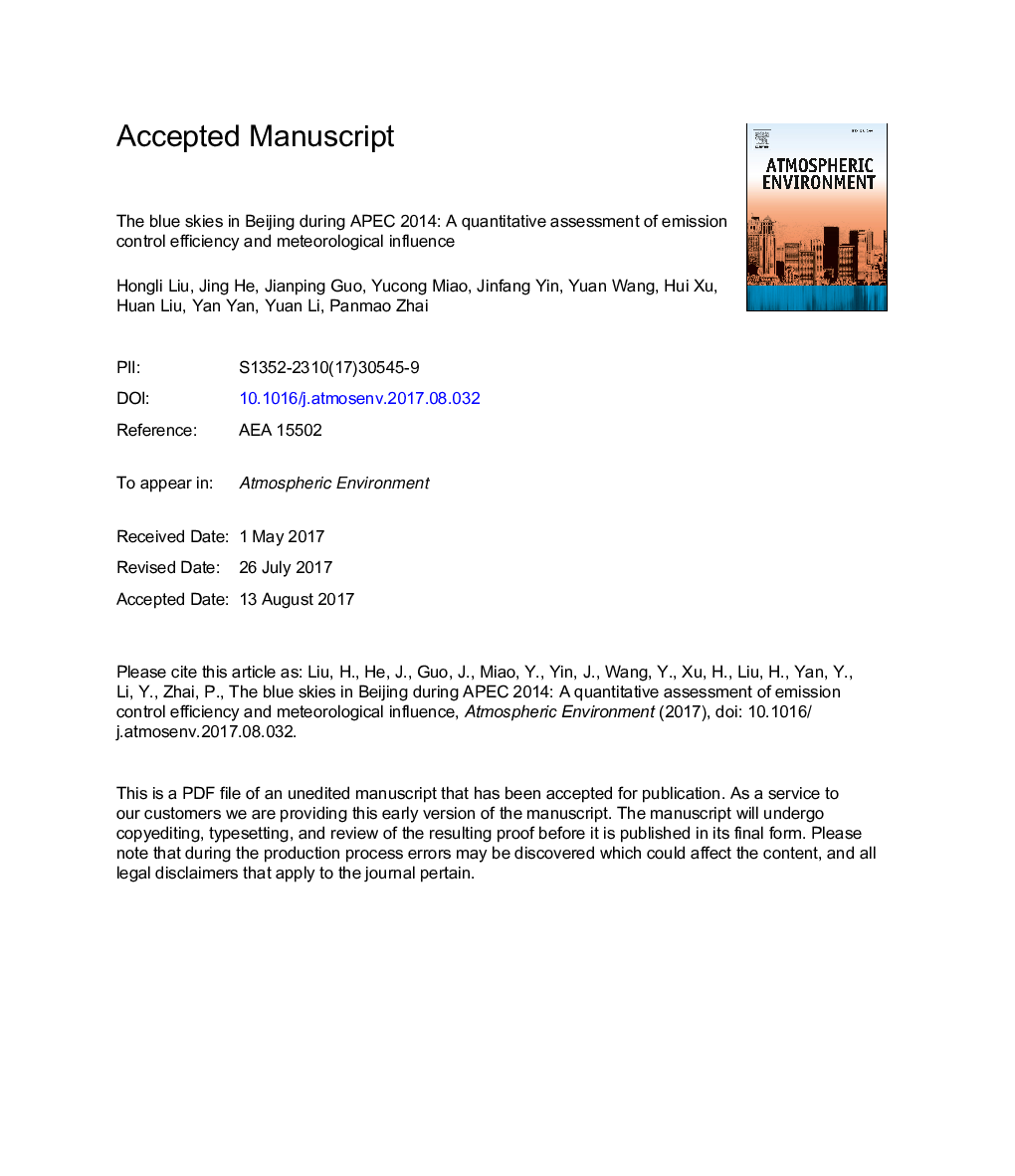| کد مقاله | کد نشریه | سال انتشار | مقاله انگلیسی | نسخه تمام متن |
|---|---|---|---|---|
| 5753067 | 1620307 | 2017 | 41 صفحه PDF | دانلود رایگان |
عنوان انگلیسی مقاله ISI
The blue skies in Beijing during APEC 2014: A quantitative assessment of emission control efficiency and meteorological influence
دانلود مقاله + سفارش ترجمه
دانلود مقاله ISI انگلیسی
رایگان برای ایرانیان
کلمات کلیدی
موضوعات مرتبط
مهندسی و علوم پایه
علوم زمین و سیارات
علم هواشناسی
پیش نمایش صفحه اول مقاله

چکیده انگلیسی
Most previous studies attributed the alleviation of aerosol pollution to either emission control measures or favorable meteorological conditions. However, our understanding of their quantitative contribution is far from complete. In this study, based on model simulation using the CMA (China Meteorological Administration) Unified Atmospheric Chemistry Environment for aerosols (CUACE/Aero), in combination with simultaneous ground-based hourly PM2.5 observations, we aim to quantify the relative contributions of the emission control measures and meteorology to the blue-skies seen in Beijing during the Asia-Pacific Economic Cooperation (APEC) summit held in November of 2014. A series of model simulations have been performed over Beijing-Tianjin-Hebei (BTH) region by implementing nine different emission control schemes. To investigate the relative contributions of the emission control measures and meteorology, the study period has been divided into five episodes. Overall, the CUACE/Aero model can reasonably well reproduce the temporal and spatial evolution of PM2.5 during APEC 2014, although the model performance varies by different time periods and regions of interest. Model results show the emission control measures on average reduced the PM2.5 concentration by 41.3% in urban areas of Beijing and 39.7% in Huairou district, respectively, indicating emission control plays a significant role for the blue skies observed. Among all the emission control measures under investigation, local emission control in Beijing contributed the largest to the reduction of PM2.5 concentrations with a reduction of 35.5% in urban area of Beijing and 34.8% in Huairou, in contrast with the vehicle emission control in Hebei that contributed the least with a reduction of less than 1%. The emission control efficiency in five episodes has been assessed quantitatively, which falls in the range of 36.2%-41.2% in urban area of Beijing and 34.9%-40.7% in Huairou, indicative of no significant episode and geographic dependence in the emission control efficiency. The emission control measures and meteorology, however, alternated to dominate the absolute reduction of PM2.5 concentrations. When the weather conditions are unfavorable, emission control measures outperformed meteorology with a reduction of 55.3-59.4 μg/m3 in urban area of Beijing and 32.5-33 μg/m3 in Huairou. Conversely, when the northwesterly winds prevailed, meteorology tends to outweigh the role of emission control in accounting for the drop of PM2.5. The atmospheric dilution conditions are determined through the model calculation of the mass inflow of PM2.5 per unit volume near the surface. Our findings have significant implications for effective planning and implementation of emission control measures.
ناشر
Database: Elsevier - ScienceDirect (ساینس دایرکت)
Journal: Atmospheric Environment - Volume 167, October 2017, Pages 235-244
Journal: Atmospheric Environment - Volume 167, October 2017, Pages 235-244
نویسندگان
Hongli Liu, Jing He, Jianping Guo, Yucong Miao, Jinfang Yin, Yuan Wang, Hui Xu, Huan Liu, Yan Yan, Yuan Li, Panmao Zhai,